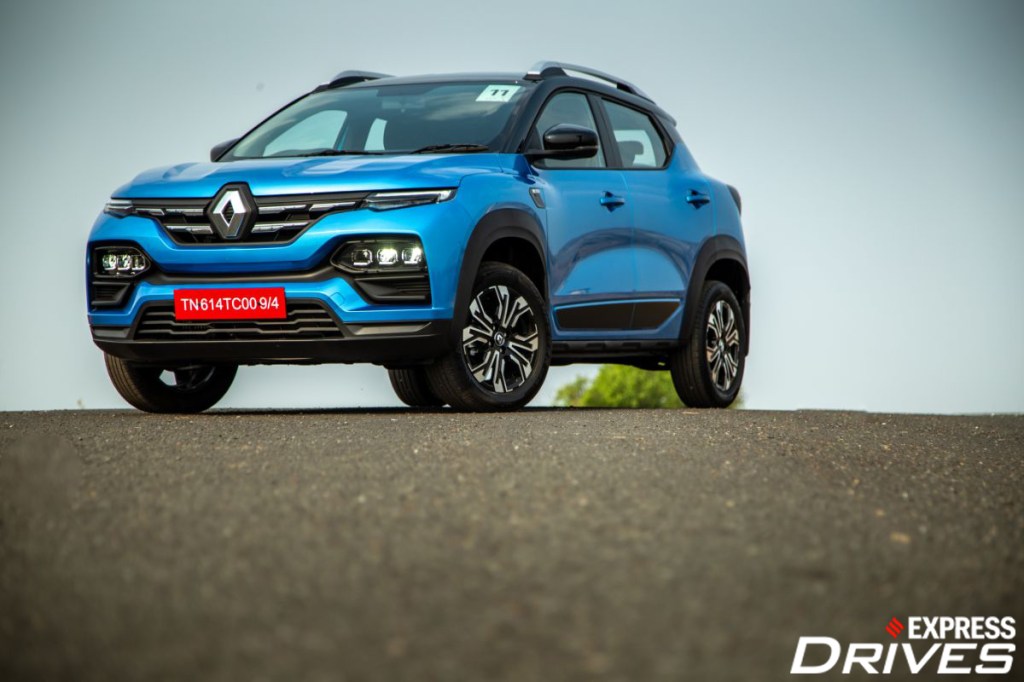Renault might be late to arrive at the sub-4 metre SUV party, but it has come prepared. With the Kiger, it has created a sweet spot for itself in the ultra-competitive sub-4 metre SUV segment (along with Nissan Magnite, with which the Kiger shares the platform).
First, the segment: With sales of 3,32,406 units in the April-December 2020 period—according to industry body SIAM—sub-4 metre SUVs are next only to hatchback cars in popularity. They also formed half of total SUV sales in India (6,77,107 units in the same period) and almost one-fifth of total passenger vehicle sales (17,77,874 units).
Now, the car: The design is just right—the top-end variant I drove has muscular lines on the body, roof rails and high ground clearance (205mm) for an SUV look, wheel arch cladding, spoiler, skid plates … you name it. At the same time, let’s understand that the Kiger—like many others in its segment—is a crossover SUV, and so the ‘profile’ of a hatchback gets reflected every now and then.
The cabin has plenty of ‘functional’ storage spaces, the dashboard has a distinctive design, and it also appears to be the most spacious SUV in its segment—with a massive 405 litres of cargo space. I found that the rear seating area of the Kiger is almost as spacious as that in SUVs a class above (such as Hyundai Creta).
But cost-cutting measures are visible. For example, the plastic quality—on the dashboard and doors—doesn’t appear to be as good as you would find in competitor SUVs such as Kia Sonet or Hyundai Venue.
It gets a 999cc petrol engine in three specifications—the naturally aspirated with manual and AMT gearbox options (72PS; 96Nm), the turbocharged petrol manual (100PS; 160Nm) and the turbocharged petrol CVT automatic (100PS; 152Nm). The claimed fuel-efficiency is 20 km/litre.
Renault India offered me the drive experience of only the turbocharged petrol variant.
In the right gear, it’s surprisingly quick from any speed to any speed. What helps acceleration is that the Kiger, at about 1,000 kg of weight, is a relatively light SUV. It offers that ‘excitement’ you get accelerating from 0-100 km/h in about 10 seconds. The steering feedback—mechanical signals that the front tyres send to the steering wheel—is accurate and you feel most bumps and dips on the road through the steering wheel.
However, the engine is noisy, and at higher RPM a lot of that noise can be heard inside the cabin.
The best thing about the Kiger is its price—variants powered by the 72PS engine are priced Rs 5.45 lakh to Rs 8 lakh, and turbo variants (100PS) are priced Rs 7.14 lakh to Rs 9.55 lakh (ex-showroom). For comparison, Sonet is priced Rs 6.79-12.89 lakh, Venue Rs 6.87-11.49 lakh and Maruti Suzuki Vitara Brezza Rs 7.39-11.2 lakh. Agreed, the Kiger may not be the best sub-4 metre SUV out there, but is the most value-for-money (along with the Magnite). At such prices, the Kiger is also within ‘easier’ reach of prospective entry-level hatchback buyers.
(Energy has 999cc petrol engine with 72PS power; Turbo has same engine but with 100PS power)
Specifications
Engine: 999cc petrol
Power: 72PS; 100PS (turbo)
Gearbox: Manual, CVT, AMT
Fuel efficiency: 20 km/litre
Ground clearance: 205 mm
Fuel tank: 40 litres
